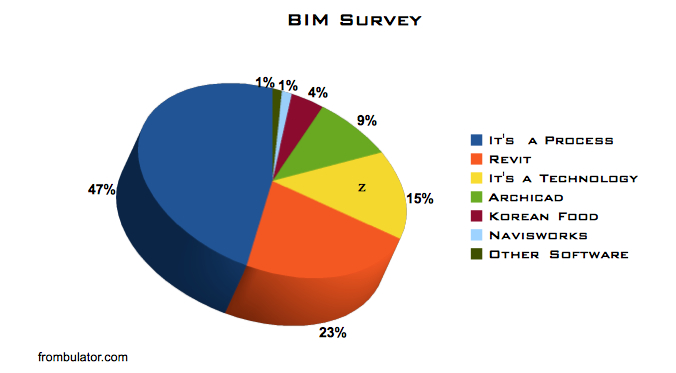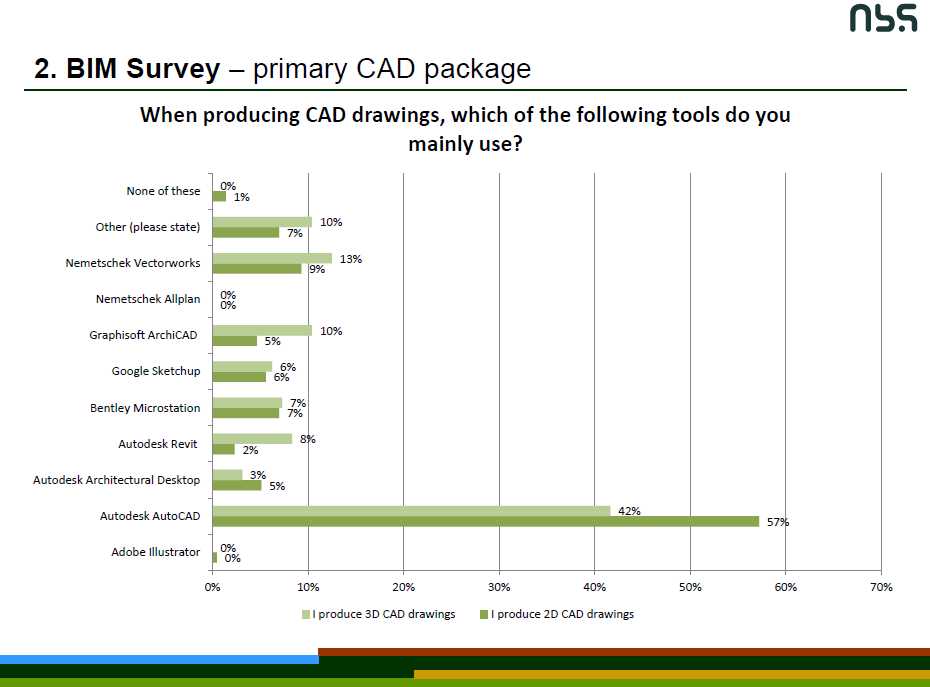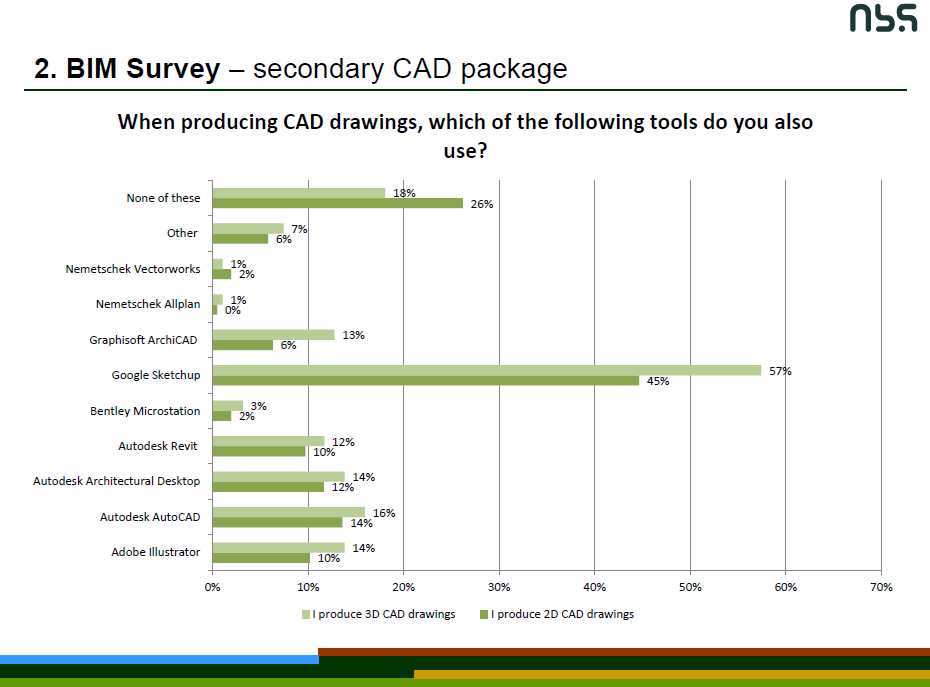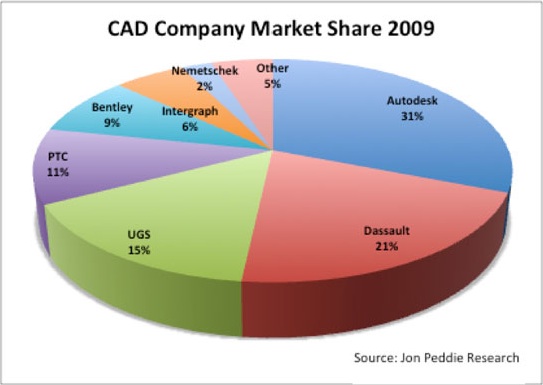Posts Tagged Market
BIM to Grow at 17%+ Per Year Through 2020
Posted by Jim Foster in Adoption, BIM on May 9, 2012
 Recently released report from Pike Research suggests that the BIM market for software and services to grow from $1.8 Billion to $6.5 Billion, or a compounded annual growth rate of 17%+. 2D CAD Market as reported by TechNavio is to grow at 7% annually through 2015. So if I were racing… I’d chose the car that’s more than twice as fast.
Recently released report from Pike Research suggests that the BIM market for software and services to grow from $1.8 Billion to $6.5 Billion, or a compounded annual growth rate of 17%+. 2D CAD Market as reported by TechNavio is to grow at 7% annually through 2015. So if I were racing… I’d chose the car that’s more than twice as fast.
The renovation market is now breaking loose…BIM
Posted by Jim Foster in BIM, Built Environment on October 13, 2011

In a recent article in the ENR (Engineering News Record) ENR’s Top 600 Contractors Awaiting a Recovery, the news is mostly bad. Revenue is down 8.7% for the Top 600 from 2009 and they do not expect a recovery anytime soon, for new buildings. One of the bright spots, “the renovation market.”
“Our maintenance and retrofit market is up 40% in the past year,” says Limbach’s CEO Bacon. After three years of bottled-up demand, he says, the renovation market is now breaking loose.
Being Tech Savvy is a plus as well in cutting the waste out of construction and trying to maintain already thin margins. “If you are not fully proficient in [BIM], you are way behind,” says Dean. He says the first phase was to show that BIM actually worked in the construction process. The industry is now in a second phase, in which practical improvements are being implemented on a regular basis. “It’s not just a clash-detection tool anymore,” says Bill Dean, CEO of M.C. Dean.
BIM Survey : It’s a Process : Second Place – It’s Revit : 5th Place – Korean Food
Posted by Jim Foster in Adoption, BIM on September 29, 2011
There are more discussion threads on what BIM is then I care to mention or dive into. Usually it turn’s into a bowl of alphabet soup with VDC (Virtual Design and Construction) and IPD (Integrated Project Delivery) etc. and the fact is it means different things to different people. So I put up a poll on the website, and I feel fine about the argument that the people who A) come to my web site and B) respond to the poll are industry professionals with a vested interest in BIM and all it entails, otherwise, really how would you get here? Certainly not by googling, “Jersey Shore” or “Justin Bieber”.
My interest here was not to put a stake in the ground and define BIM. It was to see how the market defines it, and the market defines it as a ‘process’ that they understand that the ‘I’ (Information) is more than lip service but more interestingly, at least to me, is that Revit comes in second, even before “It’s a technology”. What impact does that have? For developers, I think a large one. If you are developing software for a BIM platform, and as much as we want open standards, seamless cross platform migration, etc, the fact is until is there is an open source BIM Engine / BIM authoring tool you have to choose, and if you are a developer it makes more and more sense to choose Revit, at least at first. Now all you Revit haters, let’s hear it ArchiCAD people, I don’t care what you think is superior technology, the world is littered with “superior” technology has beens never was. For my purposes I follow what’s market driven. The history of what technology takes off and why is more interesting, a’la the VHS vs. Betamax war, and why many people thought Sony lost with superior technology.
Why you chose what technology you chose, is entirely up to you and your process. I’m just the messenger.
UK Survey Projects 50% Increase in BIM usage in 2011 : + BIM UK Marketshare
Posted by Jim Foster in Adoption, BIM, Installed Base, Installed Seats on December 8, 2010
“The majority of the market is far from ready, but accepts the inevitability of a BIM future.” This on the “Conclusions” slide of Dr. Stephen Hamil, Head of BIM for NBS (National Building Standards), presentation. While the study as pointed out by Anna Winston on BD Online
(The) survey launched by standards and specifications expert NBS has revealed an ‘alarming lack of awareness’ of BIM across the construction industry.
The survey of 386 construction professionals, including 155 architects,showed that 43% were either unaware of or hadn’t used Building Information Modeling (BIM)
So mostly we are dealing with 57% of the total, however, more importantly from those respondents, 31% of those used BIM to a degree, but within the next year that figure doubled to 62% and within 3 years a whopping 82% expected to be working with BIM. And don’t tell me that 43% that did not know about BIM stays static. Especially, not when Paul Morell Chief Government Construction Advisor has already stated that he plans to bring BIM into the public procurement process.
Looks like a big BIM BOOM, and if so, let’s look at who is using which BIM authoring package which was also broken down by the NBS Survey.
You’ll see that Vectorworks at 13% and Archicad at 10% take up almost 1/4 of the market. Revit is at 8% and its second cousin ADT is at 3% (did they not get the memo its now ACA or Autocad Architecture.) However, more telling is SketchUP at 6% and AutoCAD at 42%. This is all for producing 3D drawings. I would think that Autodesk will push the bundling of AutoCAD and Revit hard in order to further their penetration. However, look at the chart below and you see that as a secondary package 57% are using SketchUp. Yoinks. Maybe just because its free, or its excelling at visual communication but it would seem to me that Google can leverage that position to get users on the Professional Version, or perhaps something else? But understand that it was included in the BIM conversation.
BIM Euro Bust? : Adoption Rates for BIM in Europe lagging US
Posted by Jim Foster in Adoption, BIM, economic trends on October 4, 2010
 So while one can point out the data rich building modeling was born in Europe through Archicad’s debut in 1987, the term BIM was coined in the US and popularized by Autodesk, and now BIM adoption is lagging on the continent. This, at first blush, seems improbable. Graphisoft born in Hungary, Tekla born in Finland, Solibri born in Finland. Herring must help analytics. However consider this from McGraw Hills Smart Market BIM Report on Europe.
So while one can point out the data rich building modeling was born in Europe through Archicad’s debut in 1987, the term BIM was coined in the US and popularized by Autodesk, and now BIM adoption is lagging on the continent. This, at first blush, seems improbable. Graphisoft born in Hungary, Tekla born in Finland, Solibri born in Finland. Herring must help analytics. However consider this from McGraw Hills Smart Market BIM Report on Europe.
- Just over a third (36%) of the Western European industry participants reported having adopted BIM, compared to the 49% adoption rate in North America in 2009
- Over a third of Western European BIM users (34%) have over 5 years of experience using BIM versus only 18% in North America
- Three-quarters of Western European BIM users (74%) report a positive perceived return on their overall investment in BIM, versus 63% of BIM users in North America
- Contrary to North America , where BIM adoption has surged among contractors to 50%, BIM has only been embraced by 24% of of Western European Contractors.
Those using it in Europe appear to be doing it better. This most likely is short lived as the nitrous was put in the US BIM engine back when the GSA required it on projects and states started following suit as did Universities, etc. This would explain the more experience in Europe as well as the reported ROI figures.
BIM in the US is currently madness. It went from an after thought on the shelf to;
‘Give me a cup of coffee and I’ll take a BIM with that.”
” What do you need it for?”
” I don’t know just everybody is telling me I need one.”
Anyone in the business will tell you they have experience with clients that had no idea about Revit or Archicad, etc. but will include it as part of the scope on a project. These hiccups are expected so there is still a lot of education to go on within the industry. BIM is a big tent and it has many flavors so people are using it successfully in a variety of ways. It was surprising to me that GCs in Europe lagged their US counterparts in adoption, which shows that either integration is not happening as one would hope with BIM and IPD (Integrated Project Delivery) or a smaller number of contractors are getting the business in Europe.
While we might thank the US Government for mandating BIM, or for that matter whatever lobbyist and well funded junket put the BIM bug in the US ear, BIM acceleration is happening, so is the ROI and the knowledge on how to use it.
CAD Market / BIM Market 2010 : Installed Base : Ouch.
Posted by Jim Foster in 3D, Autodesk, BIM, economic trends, Installed Seats on May 6, 2010
So earlier in these ruminations I stated that I thought 30% less was the new watermark, that is, 30% less work out there, 30% off what used to be a winning bid. Early market data from Jon Peddie Research, shows a 22% drop in 2009 CAD revenues as compared to 2010. This is just on the software side, not services, which we can argue would be worse. Subscriptions are down because why renew an empty seat as are new sales. This report deals with CAD on all levels from designing parts to designing buildings but still gives a good overview of the industry. The good news for those embracing BIM is that they reaffirm other anecdotal information that BIM is a bottom up phenomena not a mandate from management. That is, the people building the buildings are the ones who are using not because of perceived value or marketing spin but because it adds value. Hammer..check…Compressor…check…BIM model…
Updated Aug 2010
I noticed a lot of traffic to this page, and also noticed that the link to the report required a log in so decided to quote it here.
Let’s just get this over with: the year 2009 was a disaster in the CAD industry. According to our latest report, the CAD industry saw revenues of $5.1 billion, a 22% drop compared to 2008 and although the picture is improving for 2010, there is no rebound because that’s just not the way the CAD industry works, and worse, that’s not how this recession worked.
The CAD industry cannot turn on a dime because it’s part of larger systems. At this year’s Autodesk University, Carl Bass noted that subscriptions were down because there’s not much reason to maintain a subscription for empty seats. Unfortunately, there are a lot of empty seats for all CAD systems worldwide. We estimate that approximately 200,000 workers left the CAD industry worldwide. And, it can be added, we believe this is a conservative view.
In this latest report we have seen an interesting trend as Building Information Modeling (BIM) becomes accepted in the engineering, architecture and construction (AEC) industry. The similar discipline, PLM is just about ubiquitous in MCAD but as it was being introduced into the MCAD industry in the early 90s, it was essentially implemented in a top-down process as management signed up for the advantages that come with a consistent and connected data pipeline. In contrast, BIM in the architectural fields is being driven by those at the end of the pipeline in building and construction.
Synchronous Lateral Excitation: What?! Get out of the Box, Get Back in the Box and Ride It.
Posted by Jim Foster in crowd sourcing, economic trends, Entrepreneurship on October 26, 2009
So for fun I was reading this article on Synchronous Lateral Excitation, okay I am kidding I wasn’t doing it for fun but the author used the opening of the millennium bridge to make a point that that people created a synchronous feedback loop, think walking in lock step, that made the bridge start to sway uncomfortably, the bridge was then closed for 2 years as the figured out and solved the problem. The author, Josh Cassidy, then went on to use this analogy for the capital markets and how it makes them crash prone. Like a continuous self reinforcing feedback loop that makes them inherently more stable, as one bank stops lending, individually sounds prudent, as a group they shut down the credit markets, companies sell assets to raise money, one company selling assets to raise money, okay, everyone doing it floods the market with assets, whether stocks, bonds, etc and the value of these assets then decline, and get on for another round.
I then read something about Google, remember they do no evil, see #6 but their argument for mining as much personal data from you as humanly possible, even if it is done under the cloak on anonymity, is to give you results that are tailored to you. That is when you search for cars, they might serve you not just generic information about cars, but they certainly will give you adwords based on cars, and maybe they even tailor it to Volvo because they new you were searching about Sweden earlier in the day, or maybe because of your web wake the found you to be ‘like minded’ with another sub-group that not only liked Volvos but were liberal democrats, or made the assumption because of the visits to Green Peace web site, and because of that when you searched for things began to serve your choices based on earlier predilections and habits, which to me is no different than synchronous lateral acceleration, that is if someone groups you with others that are like minded and that’s the info you get, this self reinforcing feedback loops only serves to bolster whatever view point you came in with. (sidebar: I think the argument that it is anonymous is specious at best because although they do not, supposedly you are Bob living in Topeka, they know exactly who you are on the internet, I’m not arguing good or bad here just the anonymity angle).
So getting back to the ‘box’ in the titile. What getting out of the box to me means is take in other view points, speak to other people go to a tradeshow, presentation, meeting, forum, etc. that has people not in your industry, just to see what people are doing, problems they are facing, solutions they are using, and you start getting a better perspective, interesting how this whole crowd sourcing thing is taking off, which could be viewed as a way to compress this type of interaction. But getting out of the box does not mean show up to work in clown clothes but rather how can we think differently about a problem, how do we bring a new perspective, and just getting out and talking to people in different venues starts to help, or e-mail, blogs, forums, and it gets too easy to stay in your comfort zone, and I’m guilty myself. Next time getting on the plan pick up a magazine or paper you’ve never read before any maybe never had any intention of reading again, see what you get out of it. Maybe you won’t get anything out of it, or maybe you’ll just see a cool ad for a volvo.
As for being in the box and ride it, how do we pick up on this momentum or recognize this momentum shift, internet bubble, real estate bubble, and we all know there will be another bubble, and what are you going to do about it. It shouldn’t be, ‘I’ve seen this before and I’m not playing’ it should be how best to take advantage of this without being standing when the music stops, or not even that, it’s how can I play and not be stupid to buy into it. Like during the internet bubble when I saw an interview with a young guy who owned the domain, and I think it was pantyhose.com, and for the millionth time I hear someone say, you know how big the pantyhose market is, I am going to be the Amazon of pantyhose, I think I knew right there that the music stopped. Hopefully we can all be bright enough to do both.





